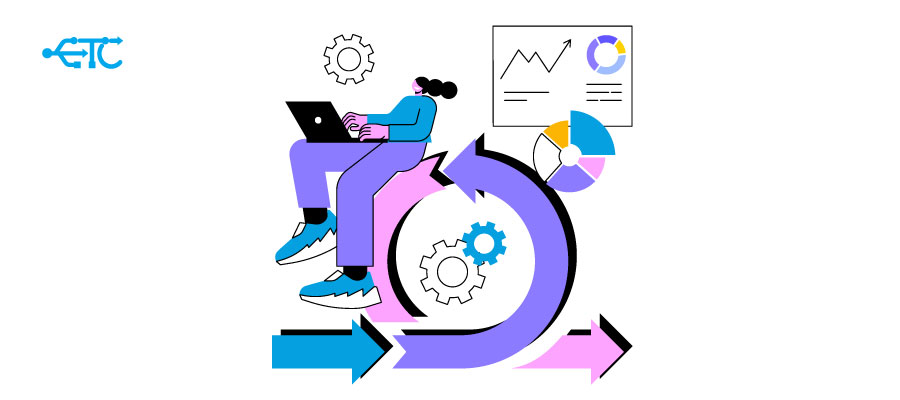A Guide to the Agile Software Development Life Cycle

In the fast-paced realm of software development, agility is the key to success. The Agile Software Development Life Cycle (SDLC) has emerged as a transformative approach, providing a flexible and iterative methodology that adapts to the dynamic needs of modern projects. This guide delves into the core principles and stages of the Agile SDLC, offering insights into how teams can harness its power to deliver high-quality software efficiently.
Understanding the Agile Philosophy
At its essence, Agile is a mindset that prioritizes collaboration, customer feedback, and adaptability. The Agile philosophy values individuals and interactions over processes and tools, working software over comprehensive documentation, customer collaboration over contract negotiation, and responding to change over following a plan.
Core Principles of Agile
1. Iterative Development
Agile embraces iterative cycles, known as sprints, where small portions of the project are developed in short, time-boxed iterations. This approach allows for frequent reassessment and adaptation, ensuring that the development aligns with evolving project requirements.
2. Customer Collaboration
Customer involvement is crucial in Agile. Regular feedback from clients during and after each sprint helps in refining the product to meet their expectations. This iterative feedback loop ensures that the end product is not just functional but genuinely addresses user needs.
3. Adaptive Planning
Agile emphasizes flexibility in planning. Rather than creating a rigid plan at the beginning of a project, Agile teams engage in adaptive planning. This means adapting to changing requirements and refining plans as the project progresses.
4. Continuous Improvement
The Agile SDLC encourages a culture of continuous improvement. At the end of each sprint, teams hold retrospectives to reflect on what went well and what could be enhanced. This commitment to learning fosters a culture of constant evolution and refinement.
Agile Software Development Life Cycle Phases
1. Envisioning:
In this initial phase, the project’s vision and scope are defined. The team collaborates with stakeholders to outline project objectives, identify potential challenges, and set overall goals.
2. Planning:
Detailed planning takes place at the beginning of each sprint. The team breaks down the project into smaller, manageable tasks and creates a prioritized backlog. Tasks are assigned based on priority and complexity.
3. Development:
This phase involves coding, testing, and integration. Agile teams work collaboratively to implement features, and continuous integration ensures that new code seamlessly integrates with existing code.
4. Testing:
Quality assurance is integral to Agile. Testing occurs continuously throughout the development process, ensuring that each increment meets the defined criteria for acceptance.
5. Deployment:
Agile promotes regular and incremental releases. After each sprint, a potentially shippable product increment is delivered, providing stakeholders with tangible progress and allowing for immediate feedback.
6. Feedback and Evaluation:
Customer feedback is collected and evaluated at the end of each sprint. This feedback loop informs subsequent iterations, guiding the development process based on real-world user experiences.
Understanding Software Development Life Cycle (SDLC)
The Software Development Life Cycle (SDLC) is a systematic process for planning, creating, testing, deploying, and maintaining information systems. It provides a framework for structuring, planning, and controlling the process of developing an information system. The Agile SDLC, a subset of the broader SDLC concept, focuses on agility and adaptability throughout the development process.
Benefits of the Agile SDLC
Faster Time-to-Market: Agile’s iterative approach allows for quicker delivery of functional software, enabling businesses to respond rapidly to market changes.
Increased Customer Satisfaction: Continuous customer involvement ensures that the delivered product aligns with customer expectations, leading to higher satisfaction rates.
Enhanced Flexibility: Agile’s adaptive planning and iterative nature provide teams with the flexibility to accommodate changing requirements, reducing the risk of project failure.
Improved Collaboration: The emphasis on communication and collaboration within Agile teams fosters a more engaged and motivated working environment.
Conclusion
The Agile Software Development Life Cycle is a dynamic and customer-centric approach that has reshaped the landscape of software development. By embracing agility, teams can respond effectively to evolving requirements, delivering high-quality software that meets the needs of both clients and end-users. As the software development industry continues to evolve, the Agile SDLC remains a cornerstone for those seeking efficiency, adaptability, and customer satisfaction in their projects.
